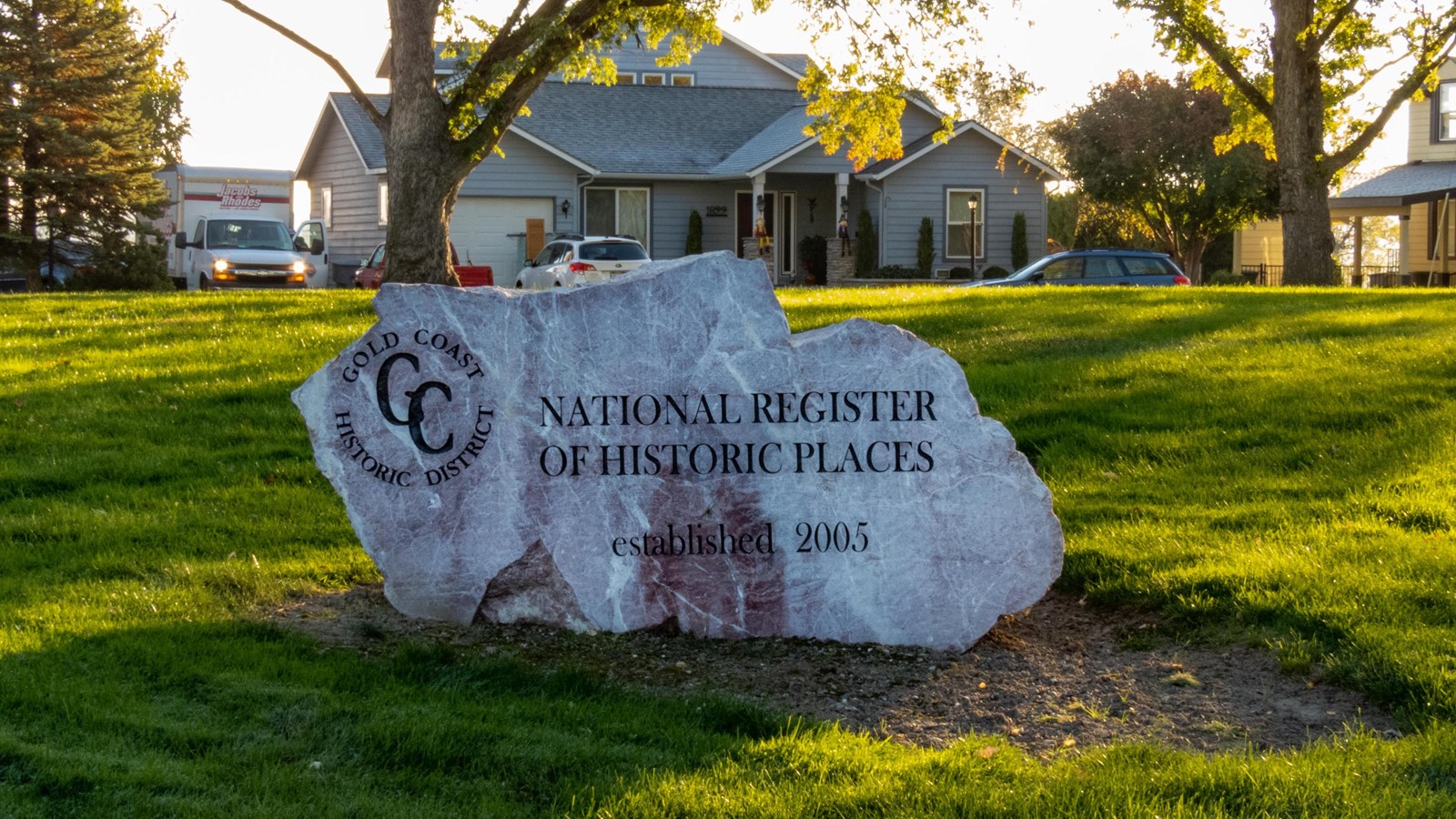Last updated: January 17, 2023
Place
Gold Coast Historic District

NPS/BURGHART
The Soviet Union’s first successful atomic test on August 29, 1949, shocked the world with the realization that the United States was no longer the world’s only nuclear superpower. The rivalry between the US and the Soviet Union led both nations to rapidly increase their stockpile of nuclear weapons. Consequently, the US needed more plutonium for its nuclear weapons. This increased demand for plutonium led to the construction of additional reactors and processing facilities, a constant influx of new workers, and a need for more housing. The Gold Coast Historic District is one of the neighborhoods that sprang up in Richland at the start of the Cold War.
Constructed in 1949, these early Cold War era homes retained the standardized design and minimalist architecture familiar from the earlier alphabet homes built during the Manhattan Project. The homes’ easy construction enabled the Atomic Energy Commission, which took control of the Hanford Site after the war, to comfortably house workers moving into this booming community. Like earlier alphabet homes, these houses initially were government property, and residents were renters who were strictly limited in their ability to renovate or alter their residences.
This area near the Columbia River was known as the “gold coast” because the homes were larger and more expensive than earlier homes and tended to house professionals. It is still a sought-after neighborhood, demonstrating the enduring impact of the Manhattan Project in the Tri-Cities region and how postwar Richland continued to grow in tandem with the United States’ atomic energy program.
Continue Your Journey
The Uptown Shopping Center, one of the first car-friendly shopping malls constructed in the postwar United States, was also built during the same boom period as the Gold Coast alphabet homes. It was a marked contrast from the Manhattan Project era’s pedestrian-friendly shopping district The Greenway (Richland Parkway), which was situated so that workers in the earlier alphabet homes could reach it by foot. Several buildings near the Parkway, including Gress’s Meat Market (Frost Me Sweet), and Dyer Building (Gallery at the Park) were originally part of the pre-war village of Richland. These buildings are excellent places to contemplate how the early years of the Atomic Age and plutonium production changed and shaped the history of Richland
